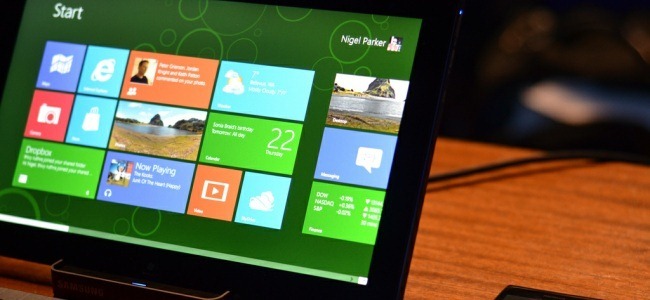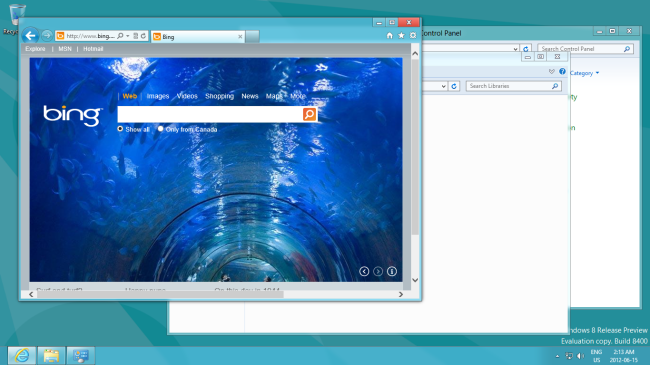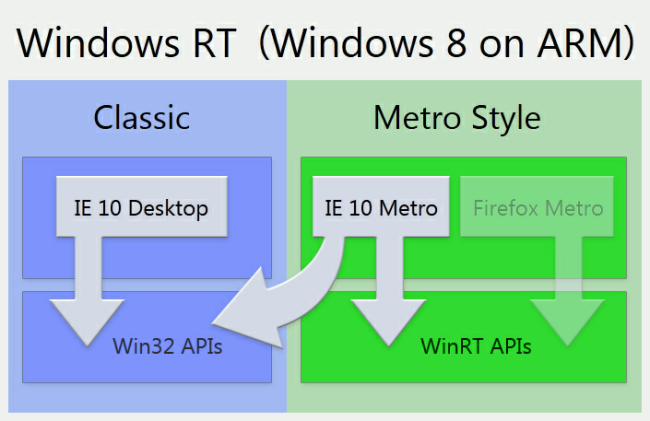HTG Explains: What Is Windows RT and What Does It Mean To Me?

Windows RT is a special edition of Windows 8. It runs on ARM and you’ll find it alongside Intel x86 machines in stores, but you’ll be surprised just how much Windows RT differs from the Windows you know.
Windows RT is so different that Microsoft has told Mozilla Windows RT “isn’t Windows anymore.” If you’re looking to buy a Windows system in stores, you should know the difference between Windows RT and the other editions of Windows 8.
Image Credit: Kiwi Flickr
ARM vs. x86
Windows RT was known in development as Windows on ARM, or WOA. It’s essentially a port of Windows from Intel x86 processors to ARM processors. x86 processors are what you’ll find in standard laptops and desktops today, while the vast majority of smartphones and tablets use ARM processors.Because it’s a port of Windows to a different architecture, it doesn’t support legacy software – that is, all software written for Windows already. It’s known as Windows RT because it only supports applications written for Windows Runtime or WinRT (yes, “WinRT” refers to the runtime that works on both architectures, while “Windows RT” refers to the operating system that only works on ARM). You probably know Windows Runtime applications as “Metro apps.”

Image Credit: Robert Scoble on Flickr
It Has A Desktop, But…
Windows RT does have a desktop, just like other editions of Windows 8. You can launch the desktop and use Microsoft desktop applications like the Control Panel, Windows Explorer, Internet Explorer, and even Microsoft Office – in fact, each Windows RT system comes with touch-optimized versions of Microsoft Office apps on the desktop. Windows Media Player isn’t included, though.However, you can’t run non-Microsoft applications on a Windows RT desktop. You might assume that this is because desktop applications just haven’t been compiled for the ARM architecture yet and developers just need to update them. This would be true, but Microsoft won’t allow third-party applications on the Windows RT desktop. In other words: The Windows RT desktop is locked-down and only for Microsoft applications. You can’t install non-Microsoft desktop applications.

Third-Party Application Restrictions
All third-party applications on Windows RT must be Metro applications, and Metro applications must go through the Windows Store and be approved by Microsoft. This means that a Windows RT device can only run Microsoft-approved applications, just like an iPad can only run Apple-approved applications.This has implications for browser choice, too. On a Windows RT device, the Metro version of Internet Explorer has exclusive access to system APIs, which means Mozilla, Google, and others can’t develop their own browsers for Windows RT – both Mozilla and Google have raised concerns about this. If you use a Windows RT device, you’ll be using Internet Explorer – just like if you use an iPad, you’ll be using Safari. All third-party browsers for the iPad are shells around Safari, just like all third-party browsers for Windows RT will be shells around Internet Explorer.

Image Credit: Asa Dotzler on Flickr
Windows RT Is For “Devices”
Windows RT is clearly inspired by the iPad and it’s no coincidence that its restrictions mirror Apple’s. Microsoft envisions Windows RT computers as “devices,” not traditional PCs. You won’t be able to buy a boxed copy of Windows RT in stores – it’s only available pre-installed on ARM systems. Initially, these ARM systems will be a handful of Windows tablets, but there’s nothing stopping Windows RT from eventually running on laptop and even desktop computers with ARM chipsets.Windows RT devices will be locked down in other ways, too. Microsoft mandates that Secure Boot on Windows RT devices isn’t user-configurable, so you won’t be able to remove Windows RT and install Linux or another operating system.

Image Credit: Kiwi Flickr
Missing Enterprise Features
Windows RT also lacks many enterprise features that have made Windows so successful. Windows RT devices can’t join an Active Directory or domain and don’t support group policy, so they can’t be easily managed by existing Windows infrastructure.Windows RT also lacks a variety of other features, including Storage Spaces, BitLocker, remote-desktop hosting, and encrypted file systems. For a full list of limitations, check out Microsoft’s post announcing the Windows 8 editions.

Not All Windows Tablets Run Windows RT
Many Windows tablets – in fact, most of the tablets you’ll see in stores when Windows 8 debuts – won’t run Windows RT. They’ll be using a standard x86 Intel processor with one of the standard versions of Windows 8. That means they’ll support third-party desktop software and all standard Windows features.If you’re interested in a Windows 8 tablet because of support for legacy desktop software, be sure to get an x86 tablet, not an ARM one. If you’re looking for enterprise features, you’ll probably want to stay away from Windows RT, too.
Current rumors indicate that each copy of Windows RT will likely cost manufacturers around $85, making Windows RT more expensive than other Windows 8 versions – and likely making Windows RT tablets more expensive than iPads. Windows RT tablets could even be more expensive than more full-featured Windows 8 x86 tablets.
Source: http://www.howtogeek.com/116637/htg-explains-what-is-windows-rt-what-does-it-mean-to-me/
Thank you.
No comments:
Post a Comment